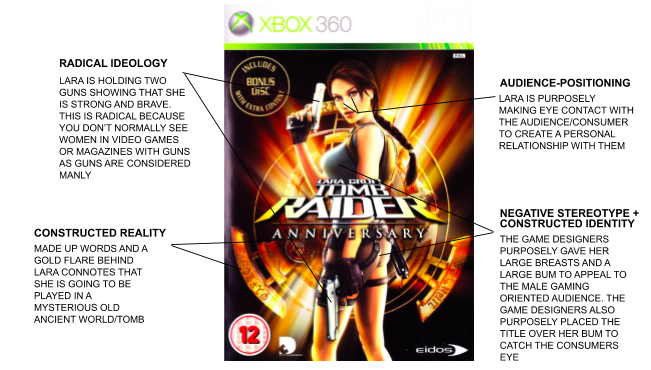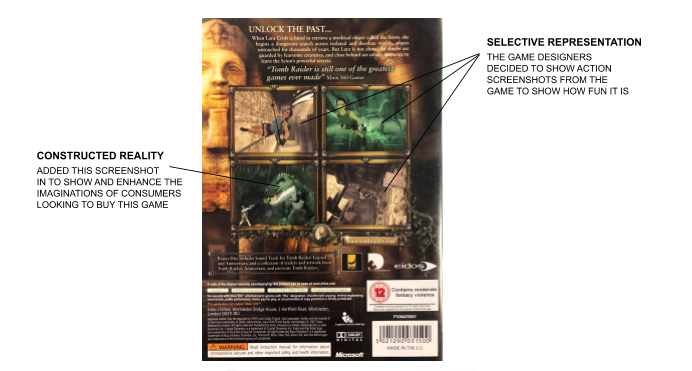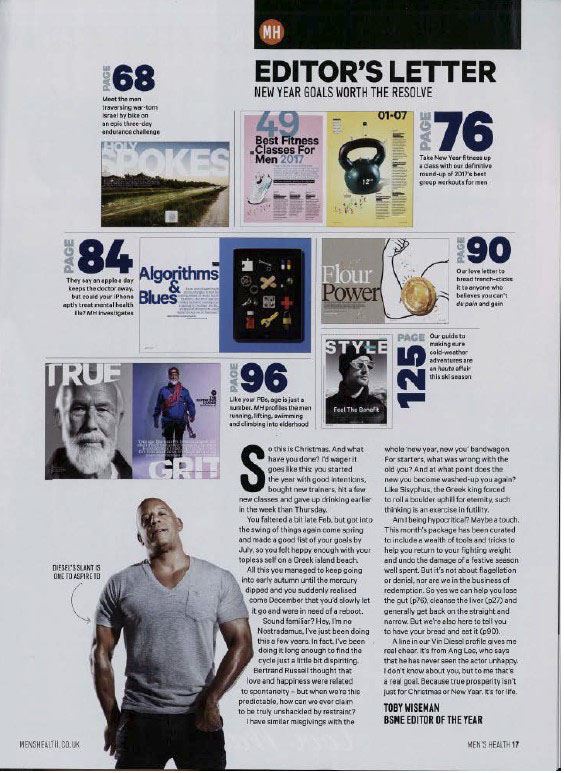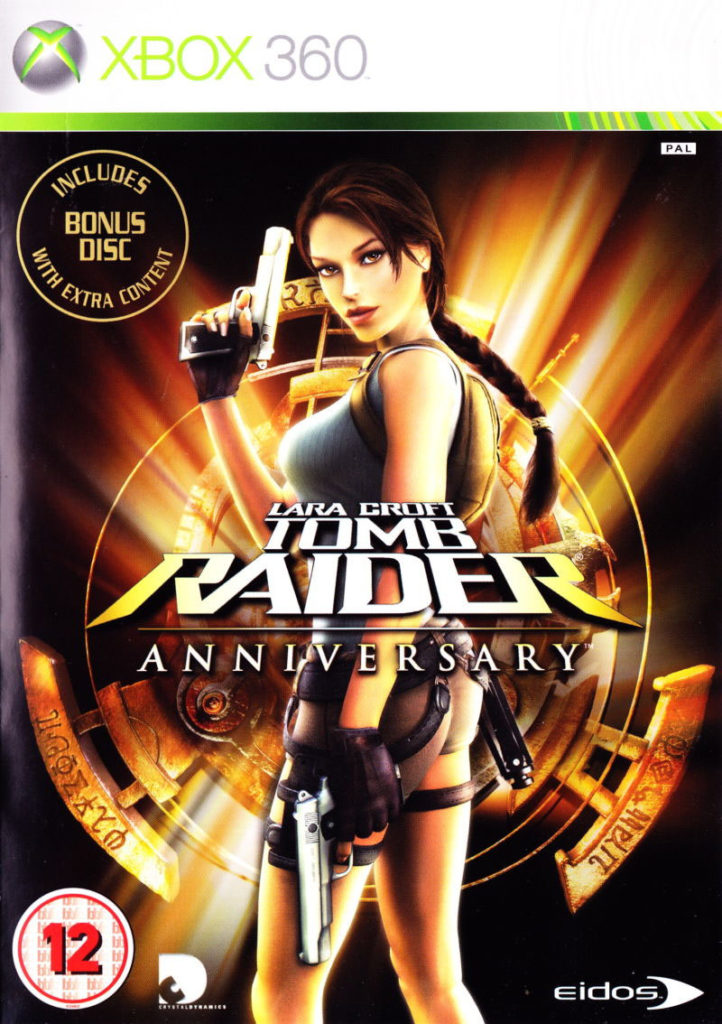I have closely studied the front page and the double page spread of the Men’s Health magazine, I have also closely looked at the front cover and back cover of Tomb Raider. In my essay I will be speaking about the constructed identity of both front cover images in Men’s Health where it is Vin Diesel and in Tomb raider which is Lara Croft. I will counter this issue by explaining the use of graphic features in both photos where in Lara Croft’s case which is her breasts and buttocks and why the designers decided to do this, in Men’s Health the misconception of what a man should look like which is clearly stated on the double page spread where in has a little text next to a photo of him saying ‘Diesel’s slant is one to aspire to’. I will also be justifying how Gender is represented, this will allow me to link into How Lara Croft is Radical as she is challenging the dominant ideology of society and how they interpret Gender stereotypes. Also, how Men’s Health portrays Van Diesel as being the ultimate man and what all men should aspire to be could also be Radical as Men’s Health is trying to make society believe this is what a man should be where n reality it is not the case.
Constructed identity is shown in both articles, this is because both images are what the editors or designers wanted on their front covers, In Men’s Health the editor wanted Van Diesel as a representation of what all men in society should look like; in Tomb Raider Lara Croft is designed in a way to attract the male audience in society so that people play their game. Firstly Men’s Health use of constructed identity is not only used in the front cover but also in the double page spread, this has been utilised by the editors of the magazine to challenge audience theories, for example on the double page spread it has Phillip Howells who is a man at his age who Is very fit however by his appearance he looks like any other ordinary man, now Phillip Howells constructed identity is used strategically as he links into Van Diesel; society’s audience theory will convey that if they can aspire to be like Howells which is a lot more reasonable than looking Like Van diesel with sufficient training they to can one day be as fit as Howells but as physically strong as Van Diesel. The use of Howells constructed identity allows it to be radical as the magazine is challenging the every day mans belief of what their body can look like. Whereas with Lara Croft her constructed identity is strategically used to attract a male audience which mostly plays video games to play their game. By Lara Croft being radical in the way she challenges society’s beliefs/stereotypes in that there should only be male protagonists in games as they are stronger and more dominant the editors of the game designed he in a way that he graphic features are used as a tool to pull these males from society to play their game.
Linking into the previous paragraph I will be justifying how gender is represented in both articles. To begin with I believe Lara Croft is Radical as she was brought into a generation that was heavily dominated by male protagonists and the stereotype of how men were more powerful and how women were inferior and the impact she had on being one of the first female protagonists really challenged society’s views on how they portray their male and female stereotypes. On the front cover of Tomb Raiders game Lara croft has a yellow light behind her which also looks like an aura, this yellow aura can be portrayed as powerful this is because the colour yellow is reassembled to energy and energy brings power, she also shows power in the way her body is postured and how she is standing upright. However Lara Croft can also be portrayed as Reactionary I was shown this by the article on Tomb Raider and the creation of Lara Croft, this is because the creator Toby Gard originally intended ‘to make the character male which resembled Indiana Jones however due to law suits Lara Croft was Made’. The way in which Lara Croft is Positioned in the front cover; showing he behind and enhanced graphic features, females are portrayed in this way to draw in ‘straight Christian Males’.
Similarly, to Tomb Raider Men’s Health also use certain colours in their article to portray a belief, for example the Men’s Health article uses blue and black, these colours are linked into men as they are portrayed as manly colours by being dark and bold. Gender is represented in Men’s Health as Vin diesel is a dominant signifier and what a man should aspire to be this therefore challenges audience theories and makes them want to train, then on the contents page and front cover page the dominant signifier is supported by an anchorage which is a skinny male to change societies males in particular ways to portray fitness. This skinny male is surrounded by Van Diesel the dominant signifier as a way to convey to the audience that with the right training you to can look like Van Diesel this is shown on the article as it says ‘New Year Muscle (build a six pack for life)’.
In conclusion gender is represented in Men’s Health and Tomb Raider through being radical as they both challenge society’s views in Lara Crofts case in that how she is a protagonist and that she resembles power and she is challenging the dominant ideologies stereotypes in what a protagonist should look like, where as with Men’s Health Vin Diesel is used to challenge a males belief on what they should aspire to look like and how they will aspire to look like that. Also how constructed identity is used in both articles to attract audiences in Lara Crofts case her enhanced graphic features which are used to attract straight Christian males, also in Men’s Health how Vin diesel is used as a dominant signifier and is portrayed as what a man should aspire to be. Finally, I believe gender is represented in magazines and games covers to challenge society’s beliefs.






